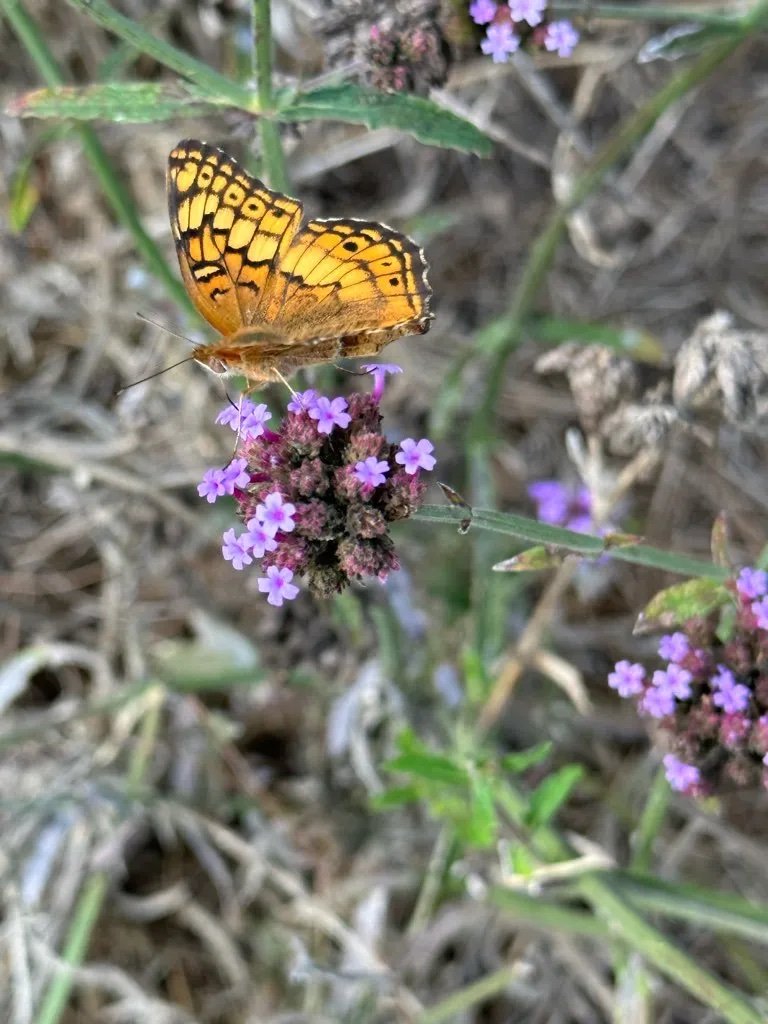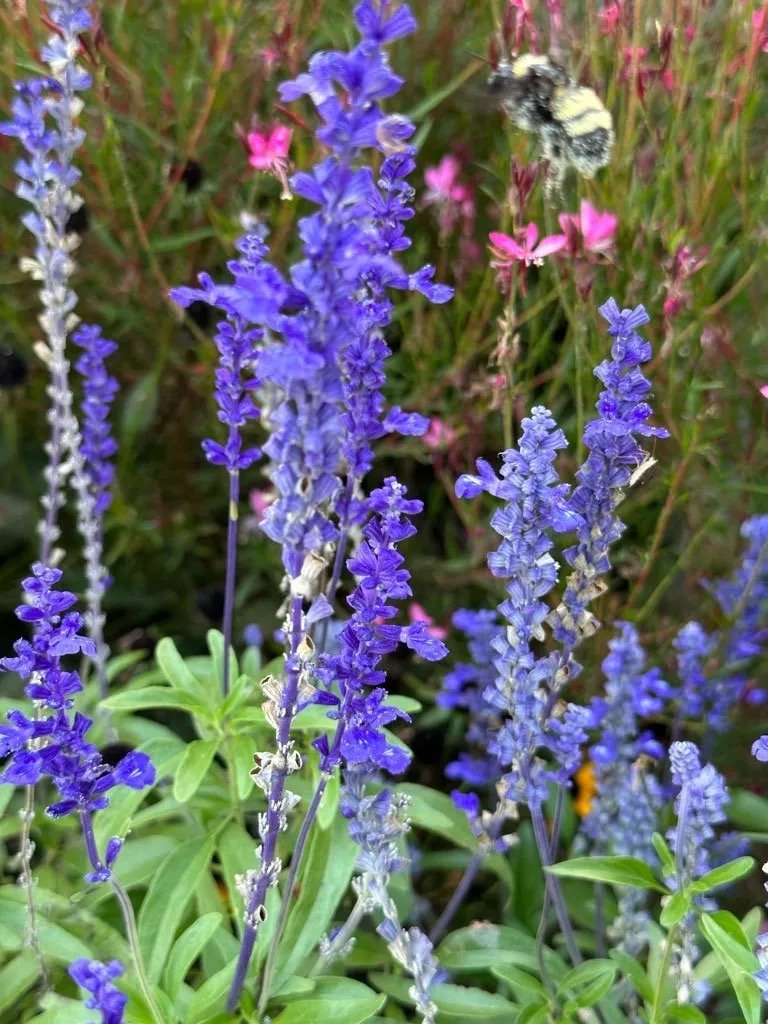How I Attract Butterflies and Bees to My Cottage Garden
Who doesn’t love butterflies? They are MAGICAL AND ROMANTIC in the cottage garden.
When I walk down my garden path, butterflies flip up in front and all around me.
Technically, they may be moths, but the charm is not diminished by that knowledge.
The truth of the matter is I didn’t strategize to attract bees and butterflies to my garden but they came!!
https://youtube.com/shorts/Yg2dLJ7Axq0?feature=share
I’ve been so enchanted by them, I now want to learn more.
Bees are simply everywhere, too. When did I start loving bees?
My neighbor has some bee hives and I keep thinking my bees may be his bees so I feel like I am part of his investment into this wild world of ours.
I have been so careful about how I treat pests in my garden because I don’t want to hurt them.
I have been learning more and more about how to protect my winged friends.
What I've Learned About Attracting Bees and Butterflies
Zinnias are beautiful flowers on their own but adding a butterfly on top is a special treat in my cottage garden.
I’ve done some research online and with my local UT (University of Tennessee) Ag Extension. They sent me an incredibly insightful article about butterfly gardening.
Here is what I learned:
There are two types of plants you need to include in your garden to attract butterflies: host plants and adult feeder plants.
A butterfly host plant is one that the adult butterfly chooses to lay her eggs on. When the eggs hatch, the larvae of the butterfly, the caterpillar, will feed on this same host plant.
Examples of this include birch, willow, spirea, hollyhocks, joe-pye weed, milkweed, and hibiscus, among many others.
An adult feeder plant is one that the adult butterfly feeds on.
Examples would include butterfly bush, asters, daisies, joe-pye weed, lantana, black-eyed susans, and zinnias to name a few.
Bees are also attracted to adult butterfly feeder plants because both love the nectar these flowers provide.
Plant nectar-rich plants and attract both bees and butterflies.
Add the Plants and Flowers Butterflies and Bees Love
This butterfly is enjoying my verbena. The verbena is an annual but has been a winner with all the winged visitors to my garden.
This is what I know. Butterflies and bees are ALL OVER my 'Pugsy' butterfly bushes.
They love love love my lantana and verbena and salvia. My joe-pye weed was a hit for them as well.
I also see the butterflies on my zinnias that I grow from seed in my cutting garden.
They seem to like a lot of my other plants and flowers (black-eyed susans and daisies) but the ones I mentioned above are where I see tons.
I am planting some asters this fall because I have heard they are a great way to attract bees and butterflies in the fall when the summer flowers are fading.
A bee, covered in pollen, feeding off my ‘Mystic Spires’ salvia.
It seems where you see butterflies, you also see bees so you get a double-whammy with these flowers.
For the past two years, I have planted ‘Mystic Spires’ salvia, which is an annual. The bees go simply mad for it.
I am committed to planting this annual, well...annually, for its beauty and for its ability to attract pollinators.
All of the flowers mentioned above are adult butterfly feeder plants (which also attract bees) except joy-pye weed which is an adult butterfly feeder plant as well as a host plant.
(Remember, a larvae feeder plant and a caterpillar feeder plant and a host plant are different terms for the same thing.)
In the spring, I want to include some more host plants in my garden. Milkweed is high on the list.
Avoid Pesticides in Your Butterfly and Bee Garden
Honestly, this is SO HARD! It is easy and tempting to spray some pesticide on my flowers and plants when those crazy insects choose to destroy them.
Japanese beetles are my nemesis. But to kill the Japanese beetles or (whatever is attacking my garden at the time) with pesticides is almost certain death for my treasured bees and butterflies.
There’s no easy answer to avoid harmful pesticides but these are my solutions:
Hand-pick off pests when possible. (So hard to have time to be consistent with this but super effective.)
Allow the pests to have their fill if it is just for a season and they aren’t destroying the plant. In other words, the plant/flower may not look as good for some time, but if I just wait it out, it will recover with no bees or butterflies harmed.
If I must spray, use organic pesticides like neem oil. And spray only in the early morning or late evening when the bees and butterflies are not active. The neem oil is not harmful when it is dry. It dries in about an hour. Timing is everything and is an easy solution. And only spray the plants affected, not the entire garden.
I’m also going to try to add catnip and allium to my flower garden which is supposed to naturally repel pests from the garden. Petunias are said to help, as well. They say planting garlic next to your roses could work. I may even check out 4 o’clocks and nasturtiums. All that I’ve read encourages me to at least try. I like some of the resources at pallensmith.com specifically https://pallensmith.com/2014/10/26/17-plants-control-pests/.
My Plans for the Future to Attract Bees and Butterflies
Here is some aster that I planted in the garden for some fall blooms to attract pollinators.
I have already mentioned some plants I want to add to my garden as feeder plants, host plants, and also as pest repellants.
I would also like to try a butterfly house and a butterfly watering hole. I’ll let you know how that turns out.
Because I am just in my second year of this garden and have seen so many bees and butterflies, I now want to see a Monarch, or even a lot of Monarchs, stop by my house for a snack or to set up home.
Milkweed is the only plant Monarchs use as a host plant. I want to host!
I don’t think it’s quite as easy as just planting the milkweed.
Monarchs have dropped in population by 90% in the last few years so, the odds of them choosing my garden are low.
But there’s a chance!
In addition, I would love to till up a hillside near my home to sow in a variety of native flowers and plants to draw in these beauties that mean so much to me.
I wouldn’t need to use any pesticides. The field could just grow naturally as it sees fit and, hopefully, the bees and butterflies would thank me with their presence.
Another bonus of this is my daughter-in-law, who is a professional photographer, has wanted me to do it for years.
It could make a beautiful place for her to photograph her clients.
Butterflies + bees + beauty + a gift to my daughter = an overwhelming win.
However, this project may take a year or so to come together.
Goldenrod and ironweed growing in my backyard are amazing native flowers. I would love to have more! Monarch and swallowtail butterflies love them! More, please!
So much to look forward to! I am going to keep researching and keep trying to attract bees and butterflies.
I will keep you posted on how it is going!







